Kenya parks & attractions
Masai Mara National Reserve
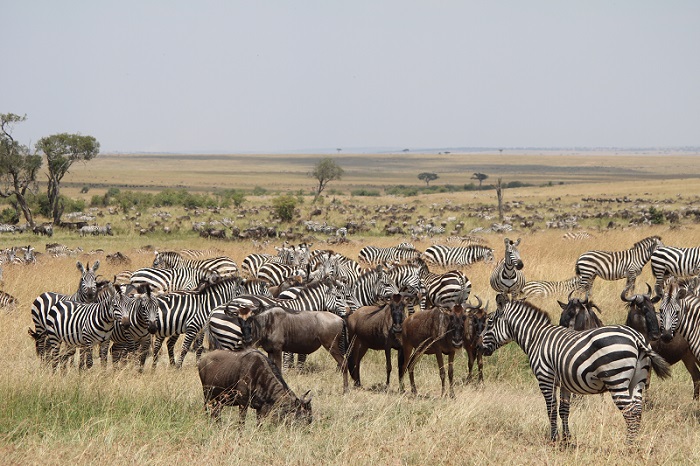
Masai Mara National Reserve, also known as The Mara, is Kenya’s prime safari destination and one of the most famous safari destinations of the world. Every traveler planning a vacation in Africa that includes a safari to experience the African savannah and see lots of animals has Kenya as one of the countries to visit because of the Masai Mara.
The Masai Mara National Reserve is a vast wilderness of rolling plains covering 1510 square kilometers in the southwest of the country along the Tanzania border and is contiguous with the Serengeti National Park of Tanzania. The plains are ideal for animal watching as you can see animals from far away, and this is why the Masai Mara is one of the best places for safari because of this easiness to see animals. The relatively small size of the park makes it easy exploring the different areas of the park when looking for particular wildlife or a reported sighting.
The Masai Mara gets its name, partly, from the famous cattle keeping Maasai tribe who have been the custodians of the reserve living in harmony with the wildlife for centuries. It is quite intriguing seeing a herd of cows herded by young boys right next to a herd of elephants, and with a pride of lions busking in a thicket not far away. The Masai tribe are famous for their warrior culture that was influenced by the wilderness of the Masai Mara.
The reserve is called The Mara from the Maasai language meaning “spotted” because of the short plains and rolling hills.
The Masai Mara is crossed by the Mara and Talek rivers that are scenes of spectacular sights during the famous Great Migration when millions of animals including Zebra, Wildebeest, and Antelope stampede through the waters from one side of the eco system to the other.
adventure and sightseeing
Wildlife & Activities in Masai Mara National Reserve
Wildlife in Masai Mara National Reserve
The Masai Mara plains are literarily filled with wildlife, from big animals and birds to different species of plants. At every turn, there is something to see and the open plains reveal nearly all the wildlife there is to see in the Mara.
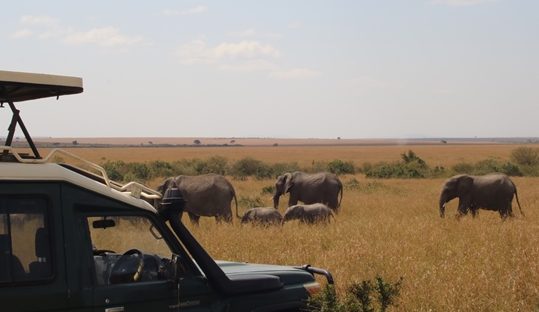
The famous African big five animals (Lion, Leopard, Elephant, Buffalo, Rhino) are found in the Mara. Apart from the Rhino, which is of the Black Rhino species, the other big five are almost always seen. The Black Rhino’s ideal habitat is dense thickets where it feeds by browsing upward on leaves of short trees and shrubs. This makes it a bit harder to find.

You have almost a 100% chance of seeing all the big cats. There are plenty of lions and on a full day’s drive in the Masai Mara, you can see more than 4 prides, and count more than 20 lions. Hyenas, cheetahs, leopards, and jackals are frequent sightings in the Masai Mara.
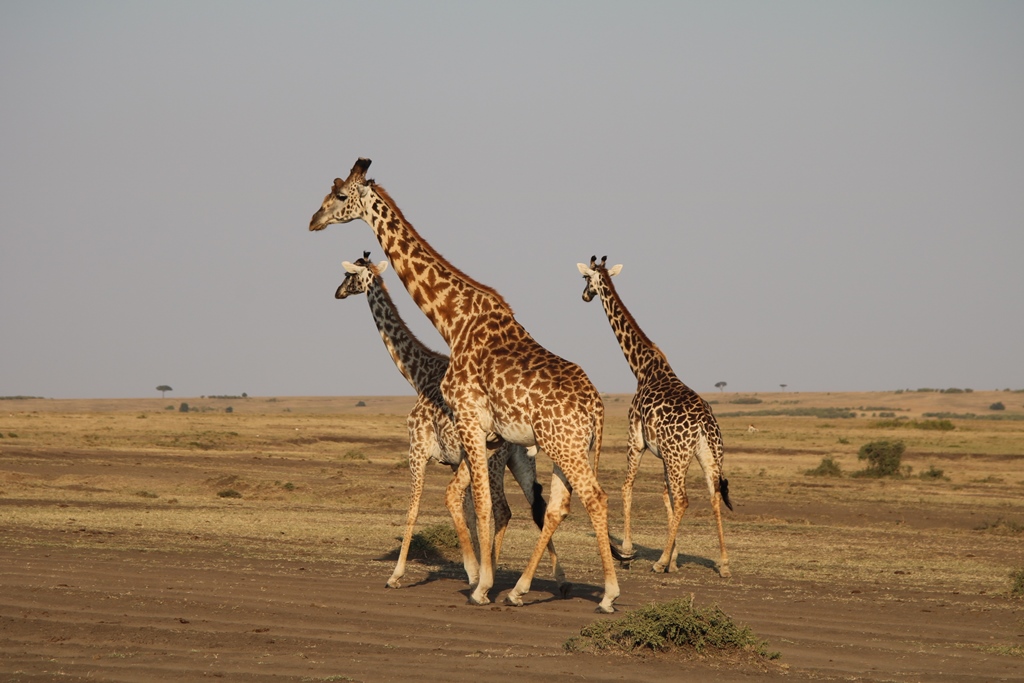
Other common animals in the Masai Mara plains are Elephants, Giraffes, Buffaloes, Zebra, Wildebeest, Thomson’s and Grant’s Gazelle, Eland, Topi, Impalas, Baboons, and Warthogs. The Mara and Talek rivers have huge concentrations of Hippos and Crocodiles and lizards (like the Red-headed Agama).
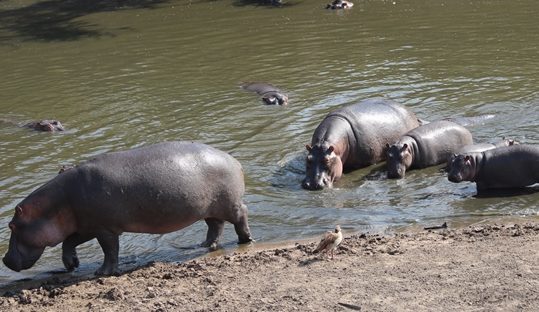
For the birder, the Mara plains are a great birding destination, especially if looking for the birds of the semi-arid habitats and savannah. The park is especially great for birds of prey. The gigantic Ostrich and Secretary Bird are iconic birds of the Masai Mara plains as they can be seen strolling the plains like they are some big game. You will not miss encountering a parliament of all the three savannah vultures; Lappet Faced, White-backed and Ruppel’s Griffon Vulture, fighting over a carcass left behind after the lions have had their fill. The ground is filled with ground-dwelling birds such as the Francolins and Sandgrouses. Other habitats such as the swamps, rivers and riverine forest add to the huge diversity of bird life in the Mara.
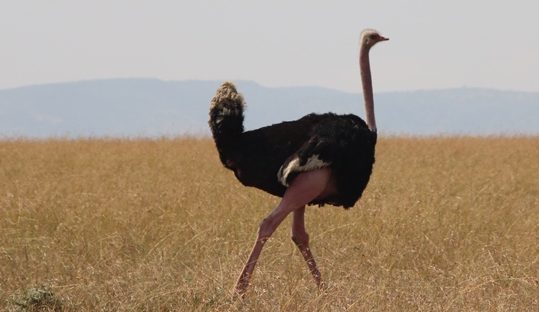
Meanwhile, the stunning Superb Starling, a rare bird in many parts of the East African region, is a nuisance in the Mara.
The spectacular Lilac-breasted Roller is a special of the Mara that you won’t miss.
Things to do in Masai Mara National Reserve
Great migration in Masai Mara
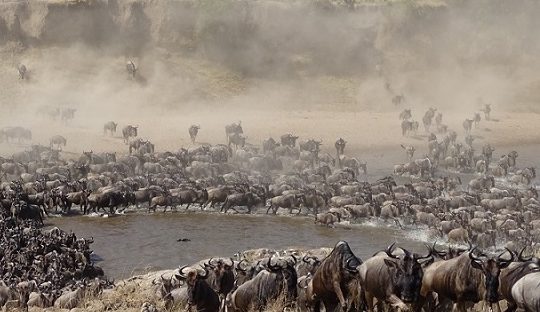
Between June and October, the great migration goes through the Mara from Serengeti in Tanzania. The Mara witnesses a spectacle of millions of wildebeest, zebra, eland, topi and gazelles that make up the Great Migration, strolling and grazing through the Mara plains. Imagine an entire landscape filled with animals to the horizon – it is such a phenomenon! The resident cats including lions, leopards, hyenas, and cheetahs have a feast on easy prey and can be seen lazily relaxing with full stomachs. However, the top prize of the great migration is witnessing the river crossing when thousands of wildebeest and zebra dash the crocodile-infested Mara to cross from one side to the other. It however needs a bit of luck to catch this sight as it is spontaneous.
Game drives
The game drive is the best way to explore the Masai Mara. The Mara has drive tracks reaching every wildlife-rich part of the reserve, and the open plains make it easy to spot the animals from far distances before heading there to see them up close.
The game drive in the Mara takes a full day.
There are two options to organize your game drives. You can leave your accommodation between 7.00 and 8 am after breakfast take a packed lunch, and spend the whole day in the plains, returning at 6 pm for dinner and overnight.
Alternatively, you can set out early at 6 am and return by 10 – 11 am, have lunch, relax and later at about 3 pm return to the park for another game drive.
The earlier start is a good option if you want a better chance to see the cats in action hunting their prey.
Balloon safaris in Masai Mara
Balloon safaris are another way to explore the Mara and see the plains from a different angle. The balloon safari will enable you to access areas unreachable by car, such as in dense thickets, hills and across the wetlands or rivers. The Balloon safari will thus enhance your game experience as you have higher chances of spotting more wildlife, especially the elusive ones. For example, the Black Rhino is difficult to see on a game drive in the Masai Mara because it prefers the dense thickets and woodlands, but the balloon safari offers better chances.
Balloon safaris start quite early from 5.30 am – 6 am and the flight is 1 hour long.
After the balloon safari, you then continue with the game drive.
Birdwatching in Masai Mara
Hosting more than 470 bird species, Masai Mara is one of the Important Birding Areas (IBAs) of Kenya. The Mara is a great savannah birding destination.
The Mara is especially great for birds of prey, having a whooping 47 species. The Bateleur Eagle is almost impossible to miss as it constantly soars in the skies. The massive Martial Eagle is also a prized sighting.
The Ostrich and Secretary birds, two massive birds are impressive sightings in the Mara grasslands even for the none birdwatchers.
If you want to tick off the vultures you will only have to look for a carcass and it’s here the Ruppel’s Griffon, Lappet-faced and White-backed Vultures will be jostling over the carcass.
Other habits in the Mara such as forests and woodlands along rivers, marshes, and thickets provide a variety of other birds.
The much sought-after beautiful Lilac-breasted Roller is in plenty in the Mara.
Picnic in the plains
The Mara offers one of the best settings for a picnic in the bush that you will have. Picnicking is one of the things you will enjoy on the full-day game drive. Halfway through the day you will look for a picnic spot under a tree that can offer enough shade. Open your snack and enjoy a bite and drink while taking in the wonderful views of the Mara plains sprawling into the horizon.
Camping – tracking the great migration
If you are keen on not missing the river crossing, you can join the camping groups that follow the migration and camp at specific locations near river crossing routes.
Masai village culture experience
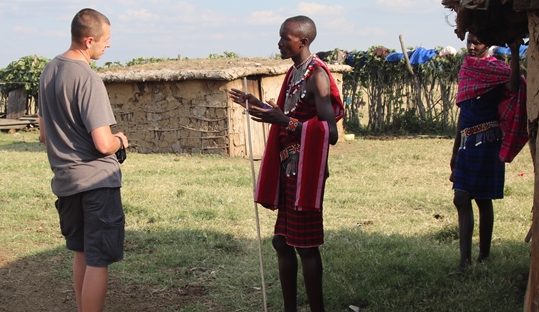
A great addition to your wildlife experience in the Masai Mara is the Masai village tour. The tour takes you to an organized village community at the edge of the Masai Mara where the Masai young men shall entertain you with the Masai warrior dance.
After the traditional dance, you are educated about the way of life of the Masai people, learning about their traditions and cultures and their connection to the Masai Mara. At the end of the Village tour, you can purchase a souvenir from the many lovely and colourful crafted and curved items on display.
Visiting Community schools
Visiting a local school and donating is one way you can give directly back to the community. You give items like pens and books.
Best time to visit Masai Mara National Reserve
Most people plan to visit the Masai Mara during the migration time when millions of wildebeests zebras and other grazers arrive in the Mara plains from the Serengeti of Tanzania after crossing the Mara River. This is arguably the best time to visit Masai Mara to witness the seventh wonder of the world. The Migration in Kenya occurs from June to October. Whether you get chance to watch the dramatic River crossing or not, seeing millions of zebra, wildebeest and other animals marching through the plains is quite breathtaking.
The migration time is also the time when most tourists visit Masai Mara National Reserve so you must expect so many tourist cars in the reserve during the game drive.
After the migration has left there is relative calm in the Masai Mara with a smaller number of tourists. There is still plenty of game and if your interest is not the migration but want to enjoy a safari without the big crowds then you can visit the Mara from November. Incidentally, many games such as Elephants and Buffaloes are in plenty when the migration has left. The elephants are irritated by the constant groaning of the wildebeests and are forced to move higher up into the hills to have their peace. Lions and other cats tend to be better seen when the migration has left because they are forced to move more to hunt the less available prey left in the Mara.
Lodges/hotels near Masai Mara National Reserve
The Masai Mara has lots of camps and lodges for you to choose from depending on your budget. Many of the camps and lodges are well situated along the Mara and Talek rivers and enjoy great views of the Masai Mara plains.
A few of our highly recommended camps and lodges:
- Masai Mara Serena Hotel
- Pride Inn Mara Haven
- Basecamp Masai Mara




